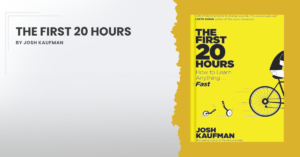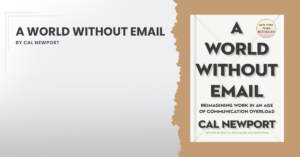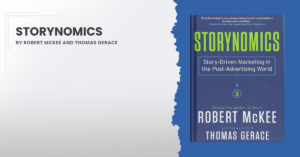Title: Agile Excellence for Product Managers
Author: Greg Cohen
Year: 2010
Pages: 152
Agile Excellence for Product Managers by Greg Cohen provides invaluable insight into how to become an effective product manager using Agile methods.
Through case studies and real-world examples, Agile Excellence for Product Managers explains how to maximize the value of Agile while avoiding common pitfalls.
Agile Excellence for Product Managers offers practical advice on how to implement Agile principles, the key ingredients of successful product management, and how to build a high-performance team.
As a result, I gave this book a rating of 7.5/10.
For me, a book with a note 10 is one I consider reading again every year. Among the books I rank with 10, for example, is Dale Carnegie’s How to Win Friends and Influence People.
Overview of Agile Excellence for Product Managers
Organizations are constantly struggling with complex development projects and are in search of a few, straightforward, and easy-to-learn methods to help deal with their problems.
For this reason, more and more software companies are rapidly turning to Agile development to cope with fast-changing markets, unknown or changing product requirements, borderless competition, and to solve complex problems.
Yet, little has been written to guide product managers through the transition to working with Agile teams and the numerous benefits that it affords.
Agile Excellence for Product Managers is a plain-speaking guide on how to work with Agile development teams to achieve phenomenal product success.
Agile Excellence for Product Managers covers the why and how of agile development the role of product management, release planning, release management, road mapping, creating and prioritizing a product backlog, documentation, product launches, organizational implications, and more.
Some key insights and learnings from Agile Excellence for Product Managers include:
- Understand the fundamentals of Agile product management and the key principles that underpin it
- Learn how to manage product features and quickly respond to changes in the marketplace
- Use effective collaboration techniques to build a productive and high-performance team
- Utilize various tools and techniques to effectively measure progress and manage risk
- Practice effective communication to ensure alignment across the product team
Agile Excellence for Product Managers is a must-read for product managers making the switch to Agile development, as well as product owners and project managers looking for better ways to organize and lead in their companies.
My Book Highlights & Quotes
“… The Product Backlog will not motivate your team. You need to paint the picture of why they should be motivated…”
“… Leading well is the single most important thing you can do to be a successful product manager with Agile…”
“… Each task should be about four to sixteen hours of work. The task list is called the Sprint Backlog…”
“… Acquiring satisfied customers who will give good references is the long-term goal, and it means working with the customer to understand what is needed, then working with the development team to understand what is possible…”
“… Larger stories are easier to manage when working with stakeholders and planning a release. Smaller stories are preferred when working with development and planning an iteration…”
“… Agile feedback loops share much in common with the Plan, Do, Check, and Adjust (PDCA) process popularized by Dr. W. Edwards Deming in his quality control work: the team members formulate a course of action, execute against it, inspect their progress, and adjust their course accordingly…”
“… Using the roadmap, define releases if you have not already done this, and create the Product Backlog by listing the key features needed to realize nine to fifteen months of roadmap vision. The backlog should match the release schedule and be prioritized by business value…”
“… With the release and Product Backlog defined, we further subdivide it into Sprints. There are two approaches that can be used. The first is setting the release date and the other is setting the minimum marketable feature (MMF) set…”
“… Simplicity—It is better to meet only the current need today and pay a little more tomorrow to change it if the requirement grows than to place a bet by developing more complicated functionality that may never be used…”
“… The Product Owner manages the creation and prioritization of Product Backlog items. If product management has its ducks in a row, the backlog is well thought-out and maps the product vision and strategic goals of the company…”
“… Requirements in the Product Backlog are typically written as user stories, which are one- or two-sentence software requirements written in plain business language. The Product Backlog can therefore be viewed as a prioritized list of user stories…”
“… There are three benefits to using more granular stories: 1. They make it easier for the team to accurately estimate the effort involved. Iteration planning is improved because each story is less of the total iteration’s capacity. It becomes more straightforward to reduce the scope (if needed) within an iteration without compromising the Sprint Goal…”
Agile Excellence for Product Managers is an essential guide for any product manager looking to maximize the value of Agile practices.
Through practical advice, case studies, and real-world examples, Greg Cohen provides a comprehensive set of tools and techniques that can be quickly implemented to improve the effectiveness of product management.
By understanding the fundamentals of Agile product management and applying the best practices outlined in the book, readers can quickly become successful product managers and ensure the success of their product teams.
I am incredibly grateful that you have taken the time to read this post.
Do you want to get new content in your Email?
Do you want to explore more?
Check my main categories of content below:
- Agile
- Blog
- Book Notes
- Career
- Leadership
- Management
- Managing Yourself
- Productivity
- Project Management
- Technology
- Weekly Pulse
Navigate between the many topics covered in this website:
Agile Art Artificial Intelligence Blockchain Books Business Business Tales Career Coaching Communication Creativity Culture Cybersecurity Design DevOps Economy Emotional Intelligence Feedback Flow Focus Gaming Goals GPT Habits Health History Innovation Kanban Leadership Lean Life Managament Management Mentorship Metaverse Metrics Mindset Minimalism Motivation Negotiation Networking Neuroscience NFT Ownership Parenting Planning PMBOK PMI Politics Productivity Products Project Management Projects Pulse Readings Routines Scrum Self-Improvement Self-Management Sleep Startups Strategy Team Building Technology Time Management Volunteering Work
Do you want to check previous Book Notes? Check these from the last couple of weeks:
- Book Notes #123: The Personal MBA by Josh Kaufman
- Book Notes #122: The First 20 Hours by Josh Kaufman
- Book Notes #121: A World Without Email by Cal Newport
- Book Notes #120: Storynomics by Robert McKee and Thomas Gerace
- Book Notes #119: Getting Things Done by David Allen
Support my work by sharing my content with your network using the sharing buttons below.
Want to show your support tangibly? A virtual coffee is a small but nice way to show your appreciation and give me the extra energy to keep crafting valuable content! Pay me a coffee:





